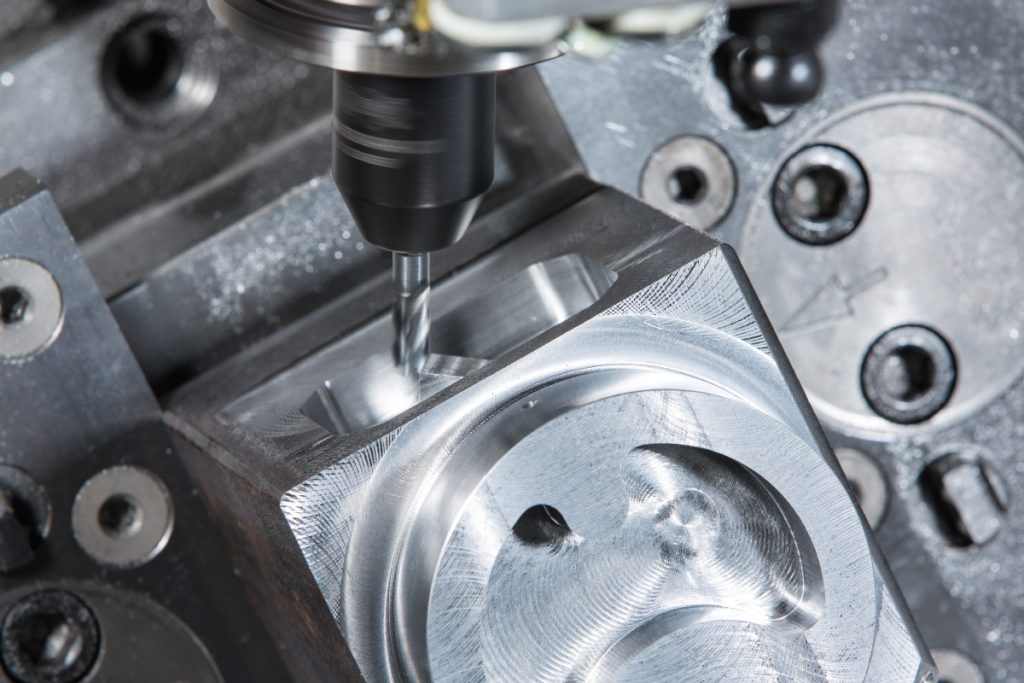BIRTH OF SOLIDCAM INTEGRATION STRATEGY
Originally we had developed our own CAD system CADTOOL to be used as the front end of our CAM system NCTOOL. CADTOOL/NCTOOL was a complete integrated CAD/CAM system on DOS. When Windows was launched in 1995, we started porting our CADTOOL/NCTOOL system to Windows.
CADTOOL was a 3D Wireframe CAD system. Obviously the next step was to move to Solid Modeling CAD. I reviewed the 2 available Solid Modelling Kernels available at the time – ACIS from Spatial and Parasolid from Unigraphics. I visited both companies to review their products. My choice was ACIS because it was based on the C++ language which we were using now for our development.
We started to built a new solid CAD modeler, based on the ACIS kernel. We integrated to it the NCTOOL CAM capabilities and we called it the NCTOOL Machinist. I did not specifically like this name and was looking for a better name for the product. One day sitting in my car at the parking lot of my son’s school, a new name came to my mind: SolidCAM. This was the perfect name since it combined the 2 main aspects of the product: CAM capability for Solid Models.
We had 2 obstacles for the new SolidCAM name. We first registered the trademark in Israel but when we wanted to register it in the US it turned out that another competitor CAM company had registered this trademark many years befor but never used it for an actual product. We had to wait for some time until their unused trademark run out and we were able to register our own SolidCAM trademark. The second obstacle was that the website www.solidcam.com was taken by a small CAM reseller in the US. We had to wait a number of years until this reseller closed his business and we bought the website from him. We also changed the name of the company from its previous name CADtech to SolidCAM as it made the most marketing and brand sense to have the same name for the company and the product.
Working on own CAD, based on ACIS, turned out to be an extensive endeavor. Looking into the matter in depth, I arrived to a major decision, that took some time to crystallize in my mind – we cannot be both a CAD and CAM company, since both needed complete concentration and CAD seemed to be the realm of much larger companies.
Actually in 1995 a new Windows-based Solid CAD system was launched –SolidWorks. I was at the US exhibition where it made its debut. Then there was an event in Israel, where SolidWorks was launched locally. The founder and CEO of SolidWorks, Jon Hirschtick, came for the launch event that was handled by the newly appointed SolidWorks reseller, Systematics. There were 12 people only in the audience, 5 of them from SolidCAM! During the coffee break, I had a talk with Jon Hirschtick, who asked me what we were doing. I told him that we have a CAM system and we are developing our own CAD, based on ACIS. He told me that we should drop our own CAD development and he would license to us SolidWorks as our CAD modeler, into which we can integrate our own CAM capabilities. I was not yet ready at the time for such a decision – SolidWorks was just starting and we were deep into our own Solid CAD development, based on ACIS.
We launched SolidCAM, with its own ACIS-based CAD modeler, in 1996. While showing the product at a US exhibition, we met Peter Brooks, who was running the mechanical CAD division of a US CAD company, Bentley. He was looking for CAM capability for their CAD and he suggested to license to us their Microstation CAD modeler to integrate our CAM in. I liked the offer and we decided to do this integration.
We then took a major decision – we decided that if we are going to integrate in Bentley Microstation, then we should do it the right way so that we can later easily integrate in other CAD products. So we created a special integration architecture that will serve us greatly in the coming years.
We basically split our product into 2 completely separate components – the CAD portion which we called Base Modeler and the CAM portion which retained the SolidCAM name. We designed a special bridge that linked the Base Modeler with the SolidCAM CAM capabilities. So when we integrated SolidCAM with Microstation Modeler, we only had to write a bridge for that integration. The SolidCAM CAM library portion was the same in both integrations – with our own Base Modeler and with the Bentley Microstation Modeler. The only difference was the small bridge portion that linked our common CAM to the specific CAD system. This was the great integration architecture that will enable the easy and successful integration of SolidCAM to all major CAD systems in the upcoming years.
We launched SolidCAM with Microstation integration in 1997 and it was a good success. We were selling a complete CAD/CAM solution that included an OEM of the Microstation CAD and obviously all the integrated SolidCAM CAM functionality.
Using our successful integration architecture, we could from now on concentrate our development power into enhancing powerfully our own core CAM functionality, while leveraging the CAD power of the CAD systems we integrate with.


